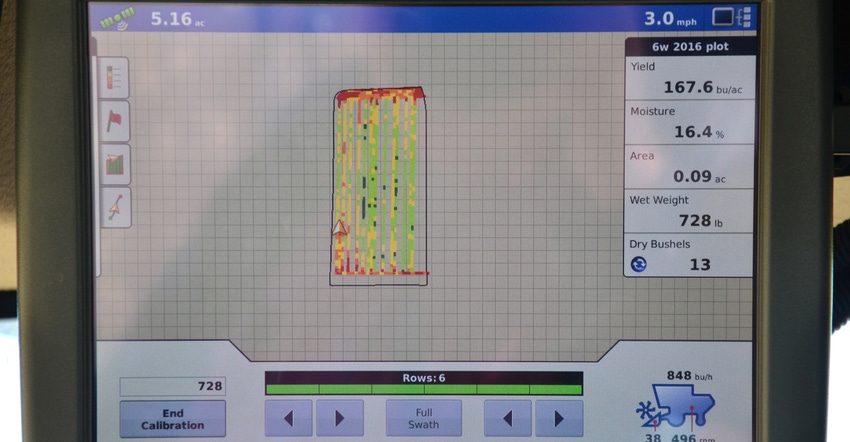December 3, 2019

The talk at the coffee shop now is typically, “How well did the crop yield?” What better way to prove you raised a great crop than a colorful yield map to show off?
Your yield map can give you much more than bragging rights. It can help you figure out problem areas and plan for an even better crop next year.
For example, by comparing your yield map to a soils map, you may see some fluctuations in yield come from different soils that should be managed differently. Comparing yield maps to soil tests may determine where amendments are needed to start increasing organic matter.
Other factors to evaluate with yield maps include crop hybrids and varieties, topographical maps showing low and high areas, possible erosion, old land uses, drainage concerns, and soil compaction.
It may take a few years to make major management decisions based on yield maps. Look where the most losses came from and make changes that could deliver the most bang for the buck.
For example, improve precision application of fertilizer, chemicals and seed; reduce soil runoff that takes away your soil and nutrients; improve drainage; address compacted areas that may benefit from cover crops; or identify hybrids or varieties not suited for your soils and weather patterns.
On-farm trials
One key tool in monitoring yields is conducting on-farm trials. Field trials can be set up to evaluate different nutrient rates, fungicide vs. no fungicide, or cover crop vs. no cover crop.
Think about what on-farm field trials would be most beneficial in 2020. There’s no better place than your own farm to see how different genetics, products and management work for you.
The importance of residue and permanent cover often shows on the yield monitor when crossing old fencerows or areas more recently brought into production. The yield monitor often shows higher yields.
Why not mimic this across the entire field by reducing disturbance as much as possible? Provide the soil with a living root all year by planting a living cover when commodities aren’t grown. Maybe then that yield monitor will have more areas of green.
Factor in ‘crazy year’
Yield monitors told us one thing in much of Indiana in 2019: Yields were all over the board. The only consistent thing about 2019 was that “it was a crazy year.”
We started off struggling to get everything planted and saw large numbers of prevented planting acres. Then we saw many areas of moderate drought in late summer, especially in southern Indiana. November brought Old Man Winter a month early. With variability in yield, residue levels will vary from field to field or even within fields. In low-yield areas, there may be leftover nutrients, yet high-yielding areas may be deficient. With early cold weather and a late, slow harvest, many cover crops aren’t well established, if they even germinated.
All these factors will impact planting in 2020. Plan for a successful 2020 by using the yield data you have. Scout fields now to see how cover crops are progressing. Look for soil erosion concerns. Planning now will prevent 2020 from becoming another “crazy year.”
Harrison is a district conservationist with the Natural Resources Conservation Service. He writes on behalf of the Indiana Conservation Partnership.
You May Also Like




